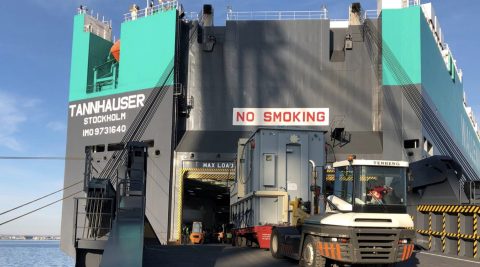
Booming transformers market is a fresh challenge for the shipping industry
Photo: Wallenius Wilhelmsen
The growing transformers market has put a strain on the shipping industry on top of the already existing port congestion and capacity demand.
Want to read more?
You have read all of your free premium articles for this month. Please become a subscriber to keep reading.
Subscribe now!
Take advantage of our exclusive offer to get full access to all premium content.




